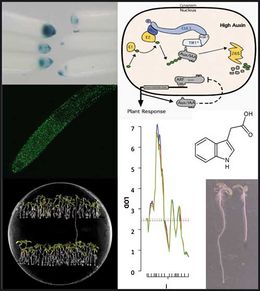Quint Lab:Research
let's play"real science has the potential to not only amaze, but also transform the way one thinks of the world and oneself. this is because the process of science is little different from the deeply resonant, natural processes of play. play enables humans (and other mammals) to discover (and create) relationships and patterns. when one adds rules to play, a game is created. this is science: the process of playing with rules that enables one to reveal previously unseen patterns of relationships that extend our collective understanding of nature." - Blackawton et al., 2011, Biology letters |
 broad research scopeHOW do organisms adapt to the environment and how do they react to different internal and external stimuli? Secondly, we are fascinated by the mechanisms of molecular evolution and how they shape plant life. Learning about the evolutionary history of signaling pathways may help to further our understanding of important developmental processes regulated by these signaling cascades.
|
 natural variation and quantitative genetics of hormone responsesquantitative genetics

|
evo-devo for one, we are interested in the evolutionary history of gene families that are involved in important signaling cascades, such as the ubiquitin-proteasome system (see schumann et al. plant physiology 2011). furthermore, we are developing ways to utilize whole genome transcriptional information for evolutionary approaches in close collaboration with the lab of ivo grosse. by applying phylotranscriptomics – the combination of phylogenetics and transcriptomics – to developmental series such as embryogenesis, we are able to trace the evolutionary path across a complete developmental process. |
